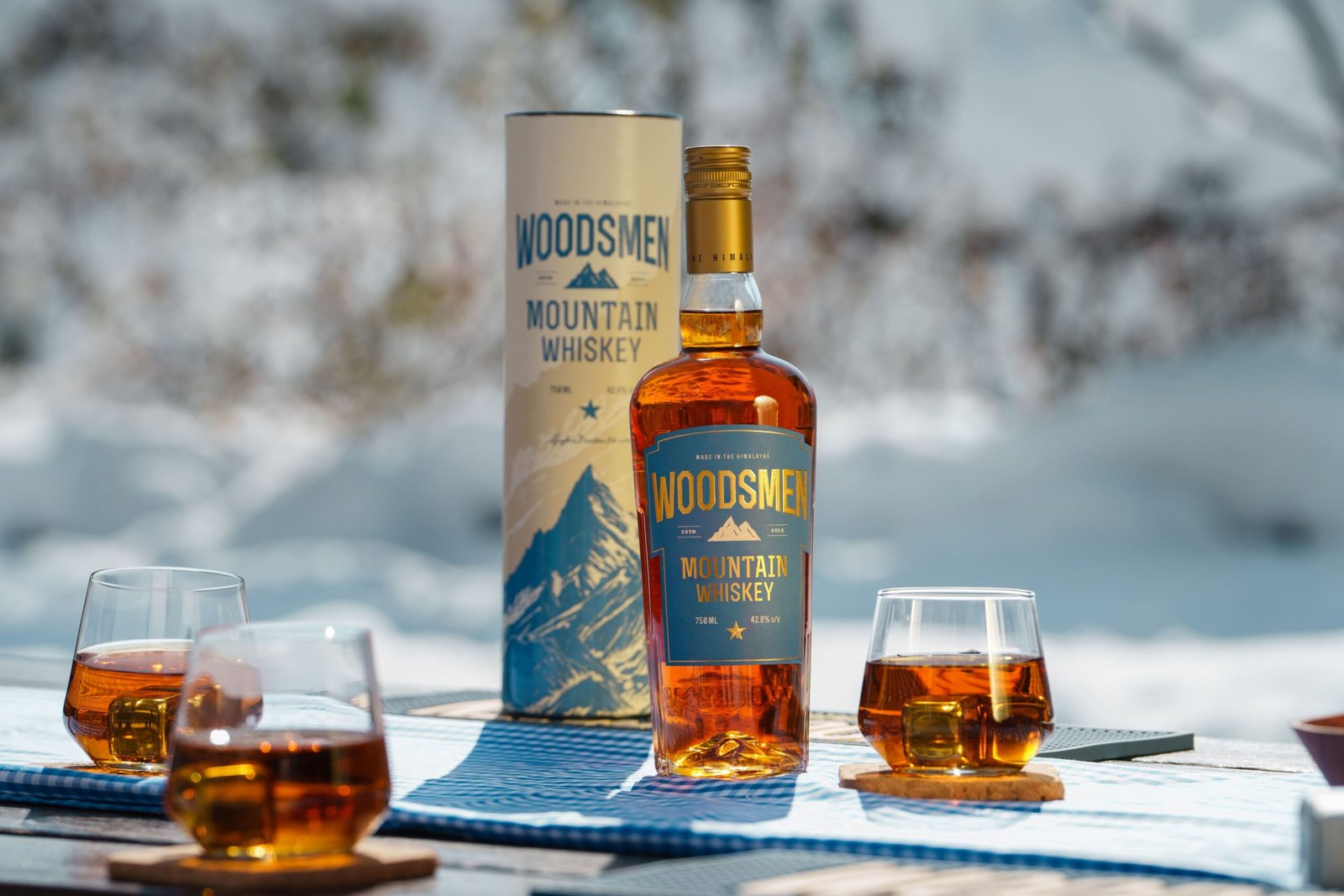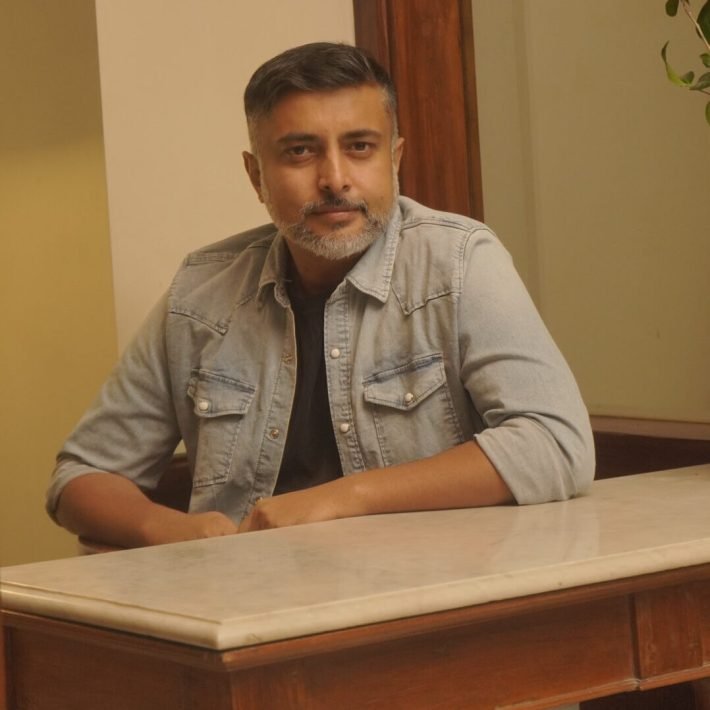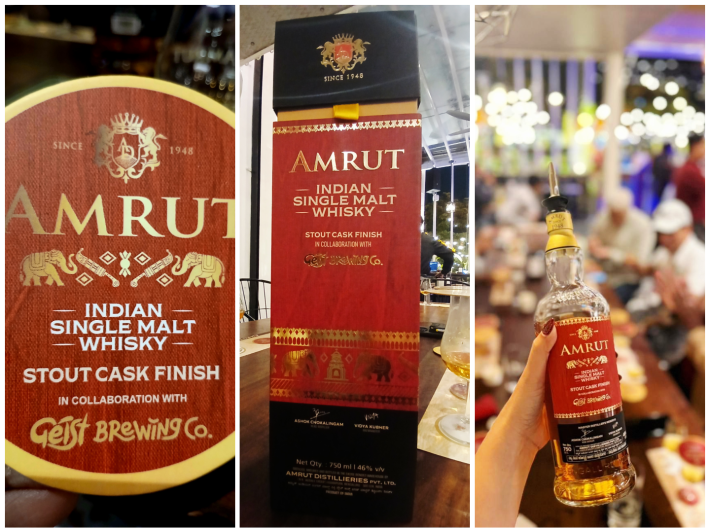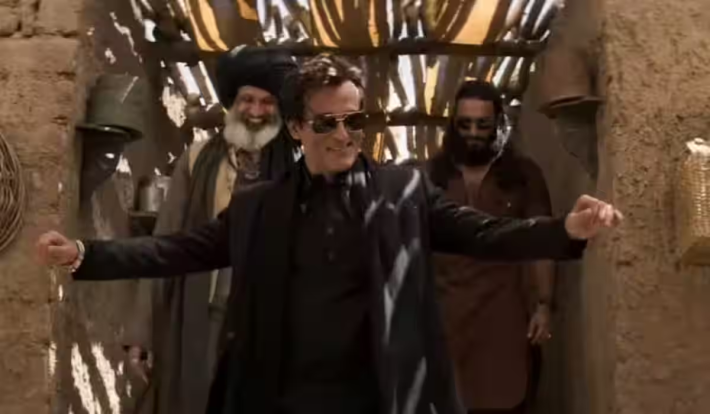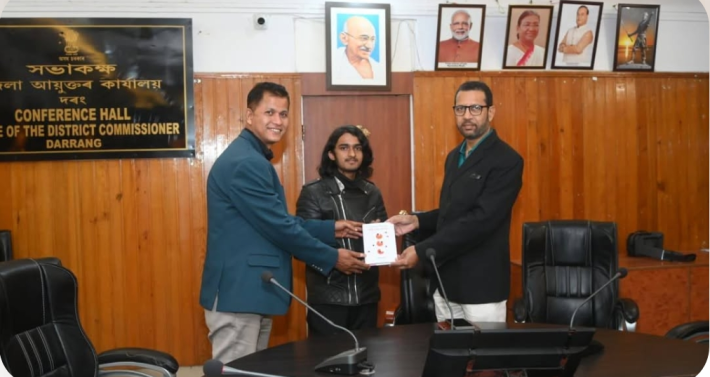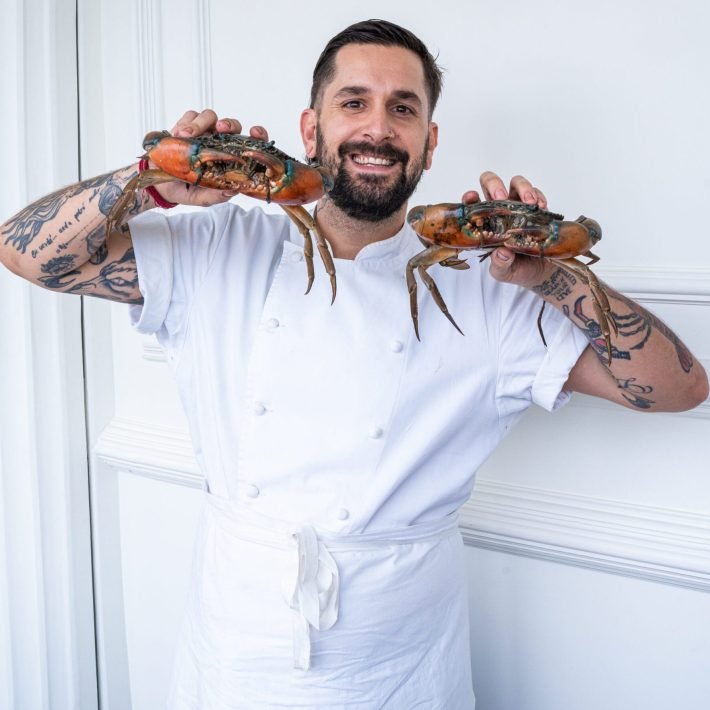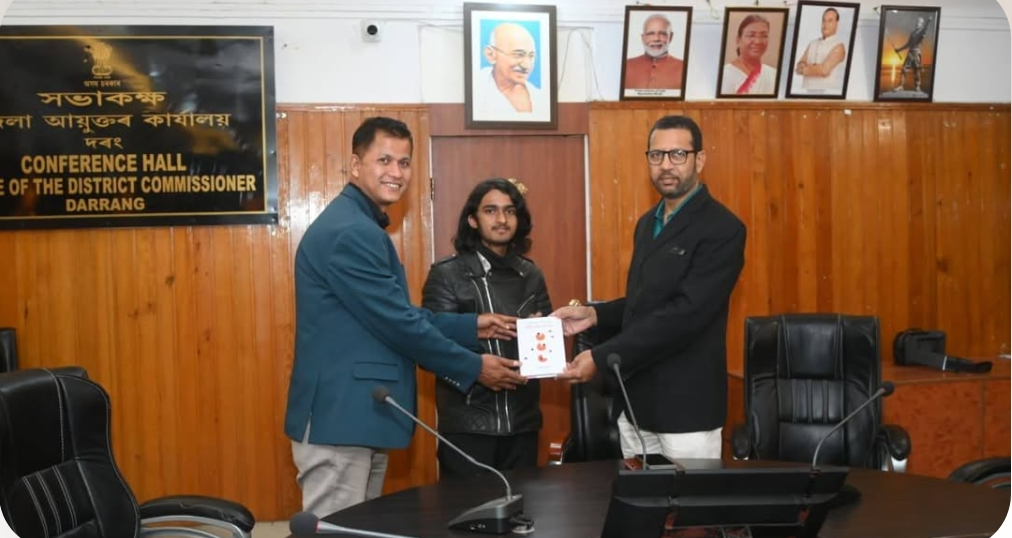Introducing Woodsmen Mountain Whiskey, a homegrown craft whiskey from Ginglani Distillers born in the majestic Himalayas. Crafted with pure mountain water and flavorful Himalayan malts, this origin-led Indian whiskey strives to redefine the country’s whiskey industry by breaking free from old-age traditions and capturing the spirit of the Himalayas in every sip.
Commemorating World Whisky Day, we delve into the pioneering spirit behind Woodsmen Mountain Whiskey, India’s first origin-backed Himalayan whiskey category, through a conversation with Ginglani Distillers’ founder and CEO, Shivam Ginglani. Driven by passion and zeal rather than prior experience in the beverage alcohol industry, Shivam’s endeavor to spearhead a homegrown whisky movement is truly remarkable. In a candid Zoom exchange, we discuss the excitement and challenges involved in creating Woodsmen Mountain Whiskey. Read on…

Woodsmen Mountain Whiskey: Sipping on Himalayan Spirit, Crafting a Whiskey Revolution

Rajeev Mokashi: Okay, so let’s start with your background in the whiskey industry. And what is your current role?
Shivam Ginglani: I had no prior experience in the alcohol industry before starting this venture. I am from Delhi, and I studied economics as an undergraduate before pursuing a Master’s in finance and business economics at a business school in Manchester.
My journey began during my time in Manchester, where I enjoyed drinking slightly sweeter bourbon-profile whiskies with friends before going out to clubs. I noticed a trend of younger consumers preferring a sweeter or more balanced whiskey.
Upon returning to India in 2015-16, I noticed that most accessible whiskey brands like Jack Daniels and Monkey Shoulder catered to only 1% of the market. For the remaining 99%, which included young professionals starting their careers or those fresh out of college, the options were limited to older whiskey brands launched in the late 80s or early 90s, such as Blender’s Pride, Signature, and Antiquity.
Despite the growing popularity of beer, I observed that, despite the fact that whiskey is significantly more popular than beer, there has been little innovation in the whiskey market for over two decades. This revelation prompted me to explore creating a new whiskey brand with a sweeter, more balanced profile tailored to the preferences of the younger, underserved demographic in India.
To add to that, the loyalty to beer is recommended because it has more stickiness compared to whiskey. Bira focused on this loyalty in the beer category, while no one was targeting the whiskey category. The market had gaps in terms of liquid quality and pricing. Young consumers look for authenticity and want to know the story behind the brand. This contrasted with the traditional positioning of Indian whiskey brands under the “Indian Made Foreign Liquor” (IMFL) category.
Got it. Can you elaborate more on Indian Made Foreign Liquor (IMFL)?
The term “Indian-Made Foreign Liquor” (IMFL) is confusing and lacks a clear identity. It distinguishes Indian-produced liquor from legitimately imported foreign liquor like Scotch or Rye whiskey but fails to establish a distinct origin story.
The challenge is that the IMFL identity system is broken. For a brand or product to truly connect, it needs to proudly own its origin—something whiskey categories like Scotch, Bourbon, Japanese, and Irish have achieved successfully. However, for 99% of the high-volume Indian whiskey market, there is no clear definition or origin narrative.
While some Indian single malts like Amrut are dialling up their origin, the vast majority of mass-market Indian whiskies lack a compelling origin story. Addressing gaps like liquid quality, pricing, and, most importantly, establishing an authentic origin narrative can help brands resonate better, especially with younger consumers seeking brands they can truly relate to.
So here we are, Woodsmen Himalayan Whiskey. It just clearly tells you where you are from.
With the current excitement and exponential growth around Indian whiskeys, how did the idea for your Woodsmen brand take shape?
You’re right, developing a successful whiskey brand takes years, just like good whiskey itself requires long ageing periods. It’s not an overnight phenomenon. The liquor industry has high barriers to entry and is a highly regulated market, making it challenging to break into.
Before conceptualising Woodsmen, I spent over a year travelling across states like the Northeast, Maharashtra, Punjab, Haryana, and Assam with a mentor who had exposure to liquor business groups. This allowed me to understand the entire value chain, from retail store workers earning Rs 5,000 to wealthy distillery owners worth over Rs 10,000 crore.
I met brand managers, designers, suppliers, and everyone at every level of the distribution chain to gain insights into the realities behind the glamorous party image that brands like Kingfisher have popularized. While the industry projects a glitzy facade, I realised there’s a lot of hard work that goes on behind the scenes to build a successful liquor brand over many years, akin to how patiently good whiskey must be aged.
What were the major challenges and opportunities you faced while bringing the Woodsmen whiskey concept to fruition?
So, to begin, how do you produce whiskey? You decide. Do you want to make whiskey? Right. Where will you go?
Rajeev: I suppose to identify and collaborate closely with an excellent whiskey blender.
So, imagine you’re 25 years old and have zero experience; you’ve not worked in a liquor company; why would a blender join you?
Rajeev: Exactly. For starters, you must be really passionate about entering this lucrative sector. Second, what new you want to offer?
A major challenge was that experienced whiskey blenders tend to be older professionals, often around 60 years old, and set in their ways. Convincing them to take direction from a 25-year-old newcomer on crafting the desired whiskey profile was difficult. It was akin to a young director trying to guide veteran actors in shaping a movie’s creative vision.
To overcome this, you had to speak their language, show immense respect for their decades of expertise, and patiently collaborate. We experimented with over 50 blends, blind taste-testing them at parties by pouring them into decanters without revealing they were our creations. This allowed getting unbiased feedback to refine the blend iteratively under the blender’s guidance until you achieved the fruity, floral, smokey, or peated profile balance you envisioned for your whiskey. Building that open working relationship with an experienced master blender was crucial, even though you provided the creative direction as the brand owner.

So how was the response? I’m curious to know…
Building trust and creating a comfortable environment for guests is crucial when hosting blind tastings. In the whiskey world, most people consider themselves experts with strong existing preferences. Getting unbiased feedback in a non-judgmental, blind-tasting setting is challenging.
The approach was to first have the whiskey blend technically vetted by experienced blenders. Then, blind consumer tastings were conducted without revealing whether it was your product. This removed bias and put people in a more natural-tasting mindset without feeling pressured to give feedback.
These blind tastings, often done cheekily by pouring at house parties, provided valuable consumer reaction data in the initial phases before finalising the blend profile that resonated well. Assembling the right team was also vital. We brought in talent like Joseph from AB InBev, who worked on brands like Budweiser and Corona, as well as Sunil from Paul John whiskey, leveraging their diverse expertise in perfecting the blend and brand positioning.
Okay. So, can you just walk us through the Woodsmen Himalayan whiskey production process?
To understand whiskey, it’s important to know there are five main grain types used: rice, wheat, rye, maize, and malted barley. Most commercial whiskies are blends of different grain whiskies and malt whiskies. Popular brands like Johnnie Walker and Suntory are blended whiskies that skillfully combine multiple components for a balanced, approachable flavour profile.
Woodsmen Mountain Whiskey is also a blended whiskey made by marrying Himalayan malts with Himalayan spring water. Water is a critical component, comprising nearly 60% of the whiskey. For iconic whiskey brands globally, the water source receives utmost importance as it greatly influences the flow and character of the final liquid. The Himalayan environment, with its fresh air, lower humidity, and higher temperatures compared to Scotland, creates unique ageing conditions. The Himalayan malts used in Woodsmen age roughly 3–4 times faster than Scottish malts. This accelerated maturation also results in a higher angels’ share loss of around 10% per year, compared to only 2-3% in Scotland’s cooler climate.
So while comprising quality Himalayan malts, Woodsmen also leverages the Himalayas’ distinct micro-climate and natural spring water to naturally imbue the whiskey with a rich, full-bodied character in a relatively shorter maturation cycle.
Nice. Could Woodsmen be proudly touted as a ‘mountain whiskey born in the Himalayas’, pioneering regionality in Indian whiskey similar to the regional identities seen in Scotch whiskies?
A whiskey’s sense of place and regional identity is vital, and there is no better source than the Himalayas for an Indian whiskey brand. From a global perspective, the Himalayas are one of the top associations that come to mind when people think of India, along with icons like the Taj Mahal, Ayurveda, and yoga. The Tata Group has already made inroads in promoting Himalayan mineral water, helping build awareness of the region’s natural, alkaline spring waters.
Himalayan water with a pH of 7-9 is more alkaline and helps neutralise the body’s acidity when consumed. The higher proximity to mountain peaks ensures the water source remains pristine and unpolluted. This focus on leveraging the pure, alkaline Himalayan spring water is pivotal to Woodsmen Mountain Whiskey’s unique proposition. Anchoring Woodsmen’s narrative in this Himalayan origin lays the foundation for a compelling provenance story that can pioneer regionality and diverse local terroir-driven expressions in Indian whiskey, akin to the regional distinctions found in Scotch.
How are you branding and promoting your whiskey?
When it comes to brand storytelling, being a younger voice in the traditionally older whiskey maker’s world presents an opportunity to forge a fresh narrative. If you think about the whiskey industry and the personalities associated with actually making and ageing whiskey over many years—not just the bartenders serving it—how many names come to mind besides the not-very-well-known Vijay Mallya?
Hmm right. So who’s your target audience—the young drinker or the more advanced drinker who is still looking for his dream dram?
The primary target audience for Woodsmen Mountain Whiskey is young professionals aged 25 to 35, more specifically around 27–30 years old, like yourself at 33. This is the demographic that has recently started earning, is finding their identity, and is asking more qualitative questions about life as they potentially look to settle down and find partners. Weekends and Friday nights are when this younger crowd tends to be more open to trying new whiskey experiences. The idea is to acquire them at legal drinking age and have Woodsmen accompany them through their evolving whiskey journey.
Currently, Woodsmen has two offerings: the Extra Smooth Whiskey and the Mountain Whiskey variants, catering to different taste profiles. But the plan is to introduce more innovative seasonal and occasion-based variants going forward.
For instance, a warmer, lightly spiced expression for winters or a lighter, more refreshing whiskey for summers are popular drinks with a chilled, flowy vibe. These rotating special variants will keep the brand exciting and relevant as the target consumer’s palate and needs evolve over time. The brand’s youth appeal and ability to innovate with diverse whiskey styles position it to be the contemporary whiskey companion for this generation through all phases of their drinking experiences.
What markets is Woodsmen being made available in its initial phase?
Expanding distribution footprints is capital intensive, so not every whiskey maker aims for nationwide or global sales initially. Currently, Woodsmen is available in Delhi, Chandigarh, and Himachal Pradesh and is launching in Haryana this month, covering 4 states so far. The next phase of expansion will likely target the huge whiskey markets of South India, like Andhra Pradesh and Bangalore, within this year before looking at Mumbai subsequently. Bangalore, with its large population of young professionals, is seen as a particularly attractive market to establish Woodsmen’s contemporary brand positioning.
While the long-term intention is to go pan-India and potentially global, the immediate focus is on strategically increasing presence in high-potential whiskey hubs like Bangalore this year. This measured regional rollout allows for optimising available capital resources to first build a strong foothold in key urban markets with the target young demographic before extending wider distribution over time.
Absolutely, Bangalore has a very vibrant crowd.
You make a good point about Bangalore having a vibrant crowd open to trying new things, with an active startup culture aligning well with Woodsmen’s brand ethos. Going to Bangalore before Mumbai makes strategic sense. However, the challenge goes beyond just obtaining excise approvals. As a company, I’ve learned to manage the regulatory aspect, but expanding to new markets is also about judiciously deploying capital resources. This is a highly capital-intensive business.
Simply launching in a new state is the easy part. The real work lies in building capable local teams that can service that market, understand the nuances of the region, and adapt strategies accordingly. Consumer tastes and cultures vary across Delhi, Mumbai, Hyderabad, etc. Just like working closely with the local Himachali community at our plant. We’d like to highlight that at our plant’s bottling line, over 60% of the workforce comprises local women. This underscores the importance of respecting and integrating with the regional community when entering a new market.
As a lean team, you cannot be omnipresent, so a measured city-by-city expansion ensuring you go deep into each market is more prudent than spreading too thin initially. Building a solid backbone in key markets first is crucial before extending further. The interest from consumers across states like Uttarakhand, Maharashtra, Karnataka, Assam, etc. to source Woodsmen Mountain Whiskey is heartening, but a thoughtful, capitally-efficient rollout plan is vital for sustainable growth.
Great. Are there any plans to launch your own music festival or associate with existing ones, as most whiskey brands tend to leverage such cultural events for brand activations?
We recently partnered as the whiskey sponsor for Sunidhi Chauhan’s concert in Delhi, organised by India Today, which had an audience of 10,000 people, and that went well. In terms of IP creation, the idea is to own a “Mountain Music and Whiskey Fest” that combines music with the brand’s Himalayan origins. Taking inspiration from Sula’s successful wine tourism model of bringing people to their vineyards, the idea is to curate an experiential festival that transports people to the mountains and allows them to immerse themselves in Woodsmen’s brand world.
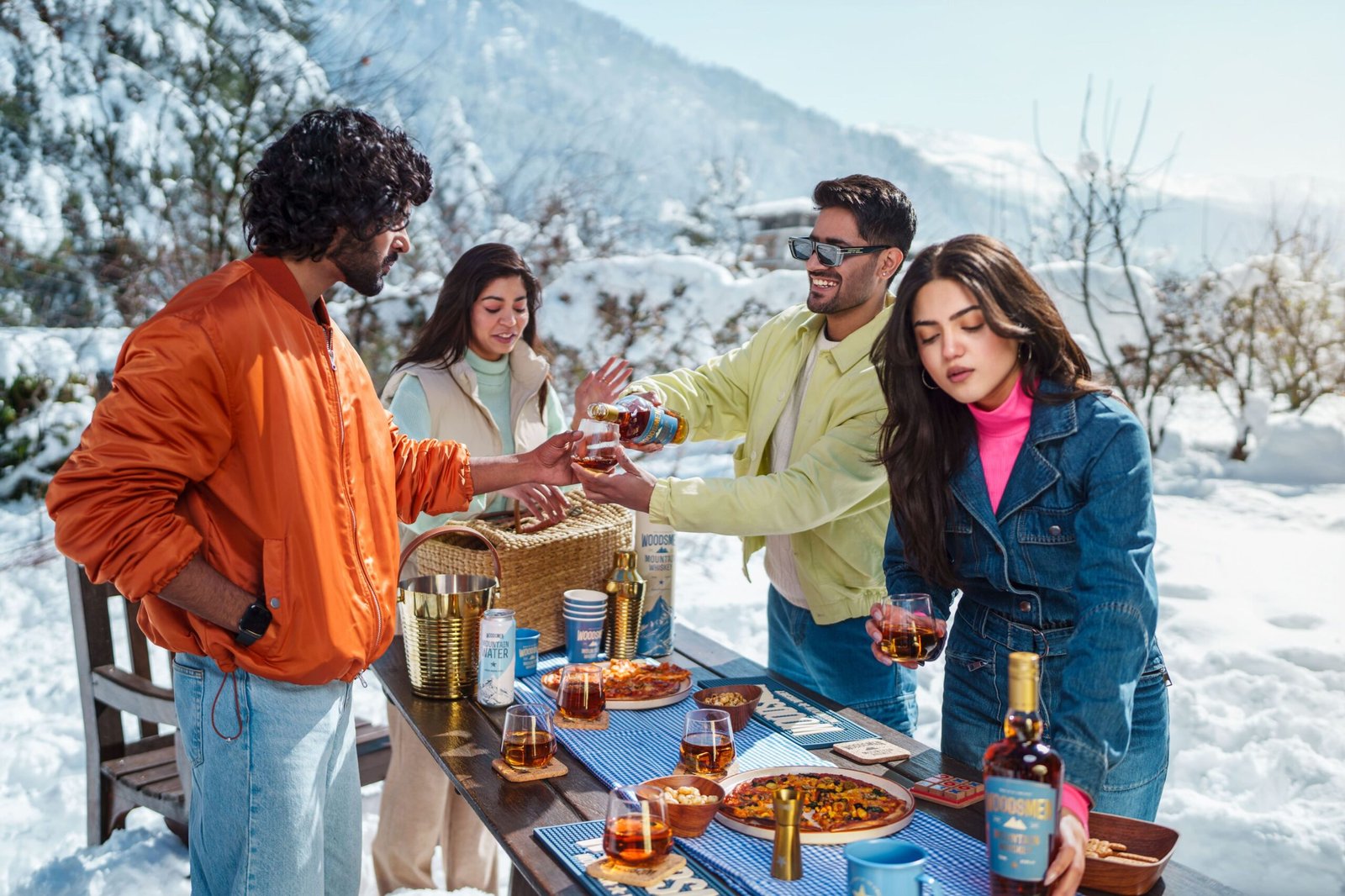
That reminds me: where were the press release images depicting Woodsmen whiskey captured?
Upper part Manali in January
The pictures have come out really well.
Thank you. We were at minus eight degrees but were enjoying the snow. I love snow and mountains personally, and a mountain music festival hasn’t taken place yet, so I think that we would want to explore that area soon.
Finally, how do you recommend Woodsmen be served?
To begin with, I would want someone to serve it with a block of mountain ice. No soda. No mixers.
Absolutely! Agree!!
That’s very important. Having the first drink over a large block of ice, as opposed to several smaller cubes, is preferred. The big ice block melts slower, maintaining the ideal temperature for longer, so you can savour the neat whiskey over an extended period. Adding a splash of water helps unlock and release the full flavours, too.
While neat or with water is the recommended way to truly appreciate Woodsmen Mountain Whiskey, we also have a signature old-fashioned coffee whiskey cocktail that has become a crowd favourite at our events. It involves shaking the whiskey with medium-roasted coffee and ice, creating a unique fusion of flavours. I’ll be happy to share the full recipe details with TheGlitz readers so they can try this distinctive Woodsmen cocktail themselves.
Awesome. Are you planning to enter Woodsmen whiskey in international blind tasting competitions?
Definitely! We’ve already sent across our whiskey to the competitions and I think a couple more are in the pipeline. Of course, we are at a possible price, but I think let’s take it on.
Shivam, this has been an insightful conversation. Before we wrap up, is there any final message or thoughts you’d like to share with the readers of TheGlitz?
While Indians are starting to embrace homegrown brands across categories, the top two whiskey players in our country are still foreign-owned. This presents an exciting opportunity for an Indian whiskey company to take the leadership position, first domestically and then potentially globally. However, this is an ambitious goal that will require more open-minded exploration and support from Indian consumers towards quality Indian whiskey brands.
Woodsmen has been crafted as a truly Indian whiskey, designed to cater to the local palate after deeply understanding the tastes and preferences of the Indian consumer. If given a fair chance to try more Indian whiskey options this year, people will be pleasantly surprised by the quality on offer from emerging homegrown labels like ours.
It was lovely speaking with you, Shivam.
Thank you so much for all your support Rajeev. I think it’s great to start a day talking to such a lively person.
Likewise. Have a lovely day!
